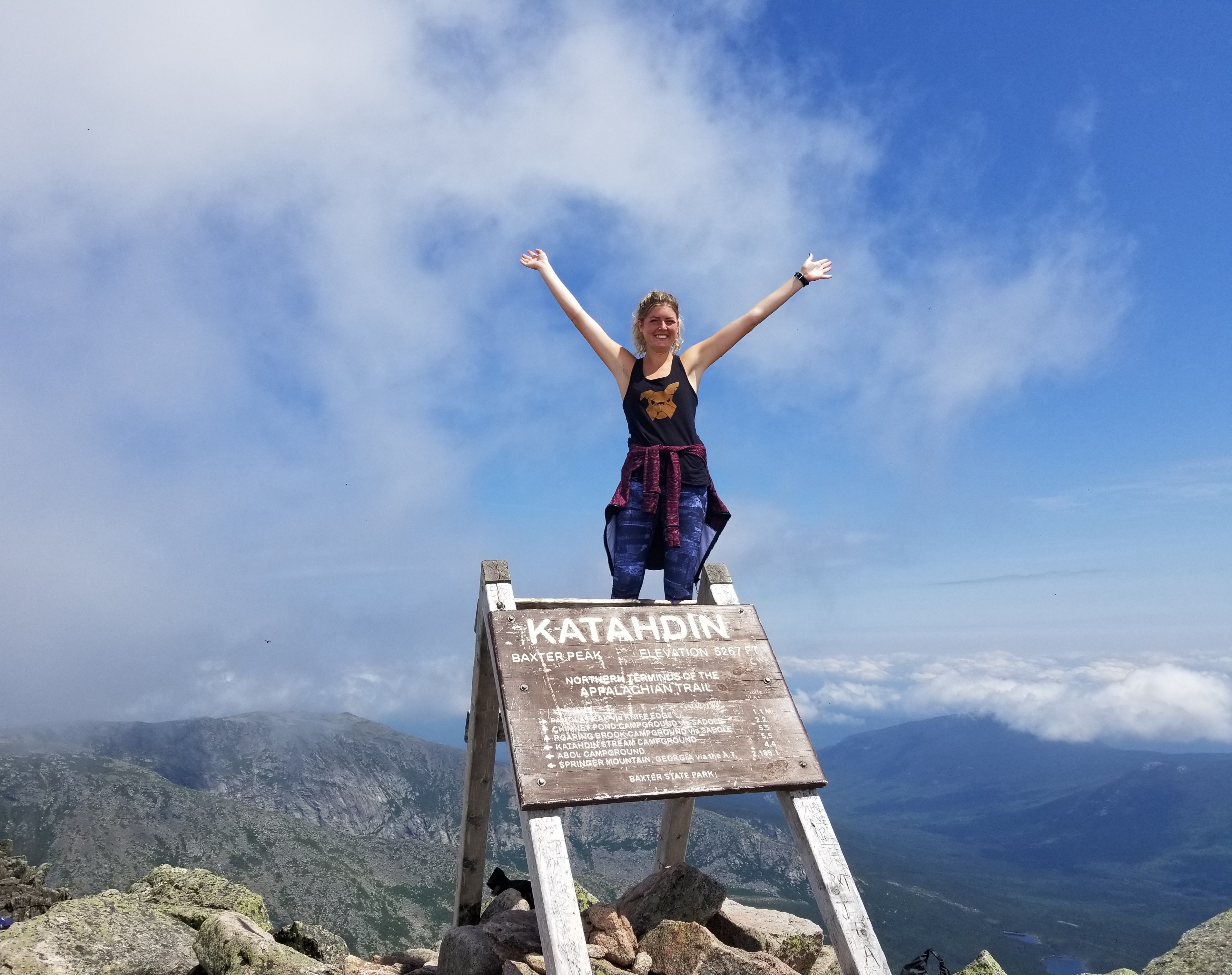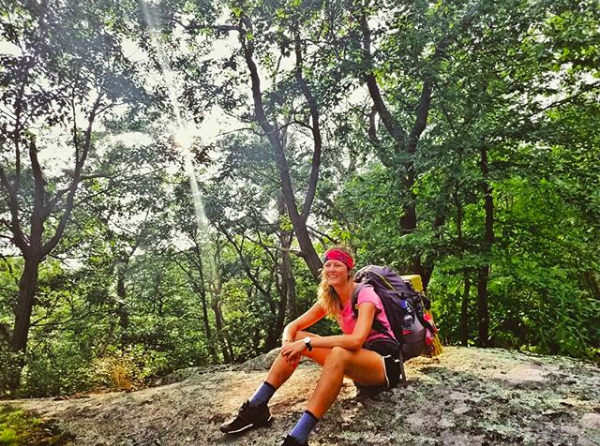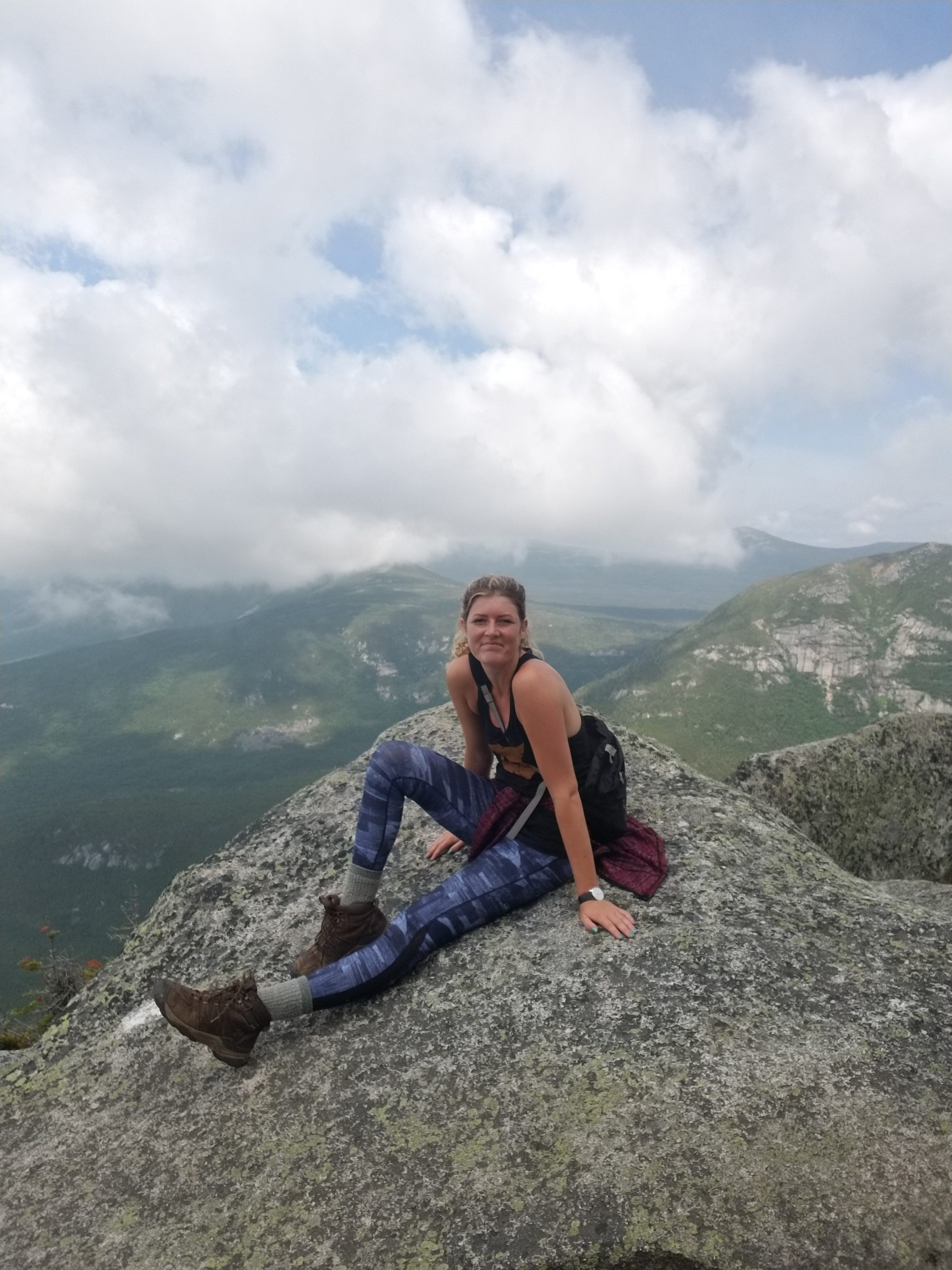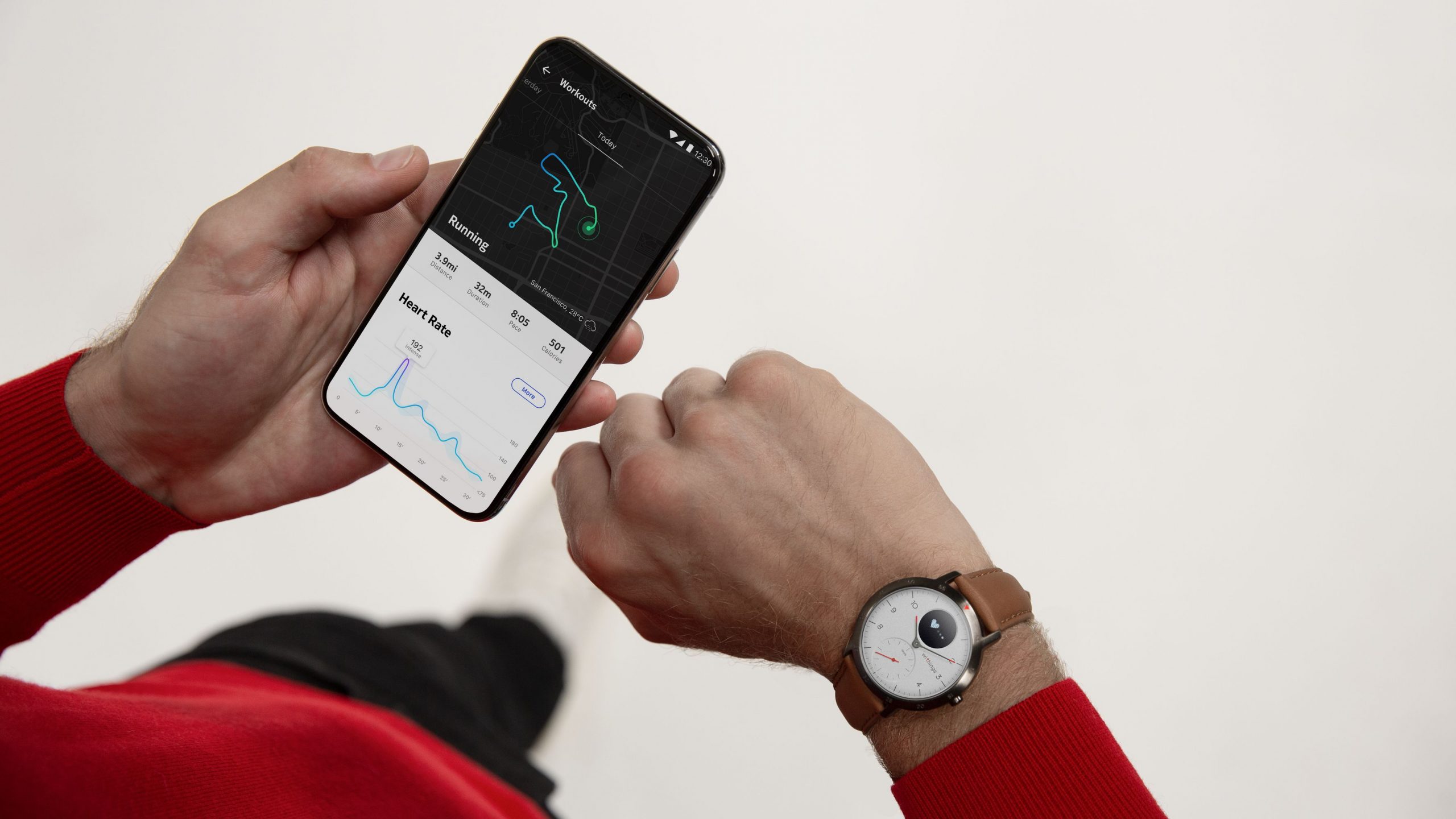
Long-distance hiker Jenni Thompson talked to us about how to balance work with epic trips, getting a million steps a month (seriously), and what to know before you go.
Jenni Thompson lives in Belleville, a small city between Toronto and Ottawa, Canada. A sports enthusiast who played eight sports in high school, and used up all five years of basketball eligibility in college, she’s most passionate about travel and long-distance hiking. We were astounded at some of the hikes she’s taken and couldn’t resist asking her about her (really, seriously) long-distance hikes.
Where did you go on your most recent hike?
[From July until Thanksgiving], I did the Appalachian Trail, about 2,190 miles, from Maine to Georgia. When I got to Georgia, I thought, “Huh, I heard about this Florida Trail and I’m kind of not done hiking yet.” I thought I was close enough to just go to Florida and start there. I started the Florida Trail right after Thanksgiving. It goes from [close to] the Alabama border to Miami or the Everglades—about 1100 miles. [Altogether], it was a total of 3300 miles.
They say the Appalachian Trail takes between five and seven months, so I said, “I can probably do it comfortably in six,” because I was in decent shape, having finished basketball season. So I looked at it and budgeted for six months. When I finished the Appalachian Trail, it was four and a half months. And I thought, well, I can do the Florida Trail in a month and a half and still be on budget.
https://www.instagram.com/p/Bsyo3DBgmgo/?utm_source=ig_web_copy_link
What got you interested in long-distance hiking?
I didn’t really know long-distance hiking was a thing, and a thing sane people would be interested in doing, until I saw the movie “Wild” with Reese Witherspoon. I thought, wow, this is really extreme, but I’m about to graduate and I don’t really have anything coming up. Two months later I had everything [I needed]. And I went.
In the States, people are a lot more aware of it because there are so many long-distance hiking trails. We have this trail that goes across Canada that takes two and a half years to finish, so people just section-hike it. They’ll go out for a weekend or whatever. The 6-month limit on being in the States is also hard. International people have to finish within a certain period of time, and not everyone is good enough shape at the beginning to guarantee they’re done in 6 months.
I’m kind of just making an excuse for why I didn’t know about it. [laughs] But I saw the movie and I immediately got hooked. A challenge is what gets me. In high school, I was on 8 different sports teams because I loved the challenge and the competition.
Can you suggest some things long-distance hiking newbies might want to keep in mind?
I think it depends what month you’re going. On the East Coast, you definitely need to focus on rain gear, whereas on the West Coast, it may rain 4 days out of 6 months, so not a lot of people even carry tents. They carry something a lot lighter, like a tarp, and they don’t carry a rain jacket at all.
I now know that a pair of shoes is supposed to go 500 miles and no more before the padding is worn out. That’s how you know to send shoes to locations that are 500 miles apart, so that when you get there, you can swap out the old shoes for the new ones. You really save the wear and tear on your feet, because your feet are what get you everywhere. You have to take care of them.
Gear-wise, it can be extremely expensive, but you do get what you pay for. It’s possible to get through the trail with a garbage bag as rain protection and a flimsy sleeping mat, but make sure you’re OK with the discomfort you may have compared to hikers with top-notch gear. I thought sleeping was important, so halfway through [the hike], I upgraded to an inflatable mat and I lugged around a sort of couch pillow. Some people looked at me like I was nuts, but I wasn’t willing to sacrifice certain creature comforts. All things Patagonia may seem tempting to buy at the time, but nobody out there really cares what brand of anything you have—you’re out there, and that’s what’s important!
Other trails need much more planning for sure, but with the popularity of the Appalachian Trail, I figured i’d wing it for the most part once I got out there—just to clarify it wasn’t completely irresponsible of me to go without knowing water sources! [laughs] I think the best way to plan is to ask people that are coming in the opposite direction. They’ll tell you exactly what you want to see. It leaves a bit of spontaneity, too, which can get lost when you’re constantly looking at maps and knowing exactly what’s ahead of you. At the beginning of the Appalachian Trail, I thought the trail was really well marked, so I started out following all the white blazes on the trees. I had no idea where the water streams were. It’s actually kind of dangerous, but I like not knowing. Halfway through I got a map and the game kind of changed. I knew exactly what was coming, and it was exciting to look forward to those things. So I just think it’s hard to plan because each person is so different.
I do make sure to read about the big things before the hike, like which direction do you want to do, do you want to run into more people or fewer people, do you want to be constantly chasing spring or fall… those are the big decisions. Once you know that, you’re good to go.
Do you hike by yourself most of the time?
I read [up] beforehand so I know [whether] the trail [will] be pretty populated. I was never worried about hiking alone if I didn’t want to—I was more worried about hiking with people when I wanted to hike alone. There was a lot of getting used to camping alone at night. Because if you have a different pace from everyone else, if you’re faster or slower, you don’t want to constantly struggle to keep up or you don’t want to feel like you need to [race] to get away. I was caught alone a lot of the time in the dark, and you hear animals, and you get used to waking up, hearing a sound, and rolling over and going back to sleep. Because realistically, if it’s a bear, what can you do?
Hiking is your passion, and yet you still need to pay the bills. How do you balance your work and your hiking life?

It’s kind of a habit to come home, work as much as I can, save as much as I can, and head out for an extended period of time. I haven’t really had a full-time job until now. I’ve always worked double part-time jobs, or jobs that are easy to leave. I did save up a lot of money while I was in school, because I was working midnights, so I was able to work full-time and not be attached.
If you have a career, it’s a lot harder. People take sabbaticals, but it’s much more rare to talk to someone who’s out on a long-distance trail who didn’t have to quit their jobs. It’s pretty common to meet section hikers out there, who are out for two weeks each year over many years, they’ll complete the entire trail. So they’ll get in 200, maybe 150 miles each year.
It also really depends on how comfortable you are with stretching your budget. There are hostels along the way and trails and it’s hard to turn up a bed when it’s $25 for a bed or $4 to pitch a tent in their yard. I usually opt for the cheaper option.
Let’s talk gadgets. Which Withings devices do you use on the trail?
On the Appalachian Trail, I had a Steel. I had that with me the entire time. The battery lasted and everything. It was unbelievable. Just last week, I got the Steel HR Sport.
Why do you like Withings devices? Which features do you use?
![Thompson's Health Mate app showing > 1 million steps a month”/><figcaption>Thompson’s Health Mate app showing > 1 million steps a month</figcaption></figure>
<p>The battery life. I didn’t want any fuss about bringing extra batteries or having to find an outlet to charge up anything, so my top priority was to find a watch with a battery that lasted the entire hike.
<br>
I use the watch mostly to check the time, to save my phone power. Not that it matters—[on the trail] time doesn’t matter. I did check all my steps. Steps were a really big thing. It sort of became a challenge inside of a challenge to see if I could beat each day. Now it’s kind of cool to look back on, to go, Wow, I really did this, I really consecutively hit three months in a row with a million steps plus.
<br>
[Steel] also tracks mileage, so that was really handy to have when you know that a water source is 8 miles away.</p>
<h2>Any tips on using Withings devices for long-distance hiking?</h2>
<p>I would say depending on how long the hike is, I would definitely use the Steel HR Sport, because it does track more—it’ll do the GPS, and the heart rate is a really big bonus. [And the battery] is always something you can count on. People depend too much on their phones. I know that may sound bad because I’m telling you to depend on another device! But it’s really handy.
<br>
I set the alarm on it because if I didn’t have to wake up at a certain period any day, I would just [use Smart Wake-Up] to set my watch and have it wake me up at the best time in a two-hour window. So I’d wake up good every single day.</p>
<h2>What keeps you going when you’re having a hard time on the trail?</h2>
<p>For long-distance hiking, you have to like it. It’s not all sunshine and rainbows, and you definitely don’t smell like daisies. It’s not uncommon to see people struggling through miles each day, having a genuinely bad time, but not wanting to admit defeat. At that point, it’s almost easier to struggle through it than return home to people saying, “See, we knew you couldn’t do it.” Much respect for people who call it quits because they know they’ll be happier for it. The <a href=](https://blogbeta-admin.withings.com//app/uploads/2019/05/one-million-steps-month.png) success rate of the Appalachian Trail in 2018 was either 17 or 23 percent depending on the direction you hiked. You never know when people may quit; some even end their hikes only a few hundred miles before the final summit!
success rate of the Appalachian Trail in 2018 was either 17 or 23 percent depending on the direction you hiked. You never know when people may quit; some even end their hikes only a few hundred miles before the final summit!
I went home for Christmas partway through the Florida Trail, and in the days on trail before going home, I was seriously afraid that once I got home I wouldn’t ever want to get back on trail. I’d settle back into the comfort, warm showers, and food access, and I’d think hiking was all for nothing—months of my life wasted, dirty, exhausted, and out there for no reason. When I did return, I was relieved to feel so refreshed surrounded by nature, crushing miles and living outdoors. It’s incredible to be aware of how much you love doing something and be able to do it.
[It helps to] keep an open mind, not to hope everything goes completely according to plan. Probably the worst thing you could do is to not have a routine down pat. Like if it starts raining, you know where your pack cover is, and everything that needs to be sealed in a waterproof bag is sealed in a waterproof bag. The rain opens up whenever it wants to. One of my worst moments is when I’m completely drenched and can’t get dry, or it’s colder than I anticipated, and I need more layers of clothing and there’s nothing I can do about it because there’s no store.
So what do you do when that happens?

You just keep walking, one step at a time. I sat down once on a couple of rocks because I thought I was too tired to keep going, and I just didn’t want to be out there anymore because it had been raining for a few days and the morale was pretty low. I sat there for about five minutes and just started laughing, realizing that I didn’t have a phone signal—was I expecting someone to help me out here? As long as I keep putting one foot in front of the other, then I’ll make it somewhere where I can do something about whatever problem I’m having.
What’s your next big hike?
The three major hiking trails are the Appalachian Trail, the Pacific Crest Trail, and the Continental Divide Trail, and if you complete all three of those, then it’s called the Triple Crown. It’s a very big deal in the hiking community, but each one is probably between 4 and 6 months long. As much as I would like to do that, I think doing them in consecutive years is just not logical.
I think I’m going to be able to take a month off in the summer and be able to do the Long Trail. It starts at the Quebec border in Canada and goes down to Massachusetts. It shares about 200 miles with the Appalachian Trail. It’s the first Long Trail created in the States. And it’s really hard, apparently. [laughs] I think it’s about 400 miles total and it’s closer to home, and it’s got some history behind the hiking. So I would like to do that. There are so many options, it’s almost overwhelming. In a good way.
Thanks, Jenni! We love hearing your tips and tricks, and wish you the best of luck on the Long Trail. To follow Jenni on her adventures, check out her Instagram @jennithomps.



